How to fix Chromebook not turning on
1. Try using a different charger and outlet
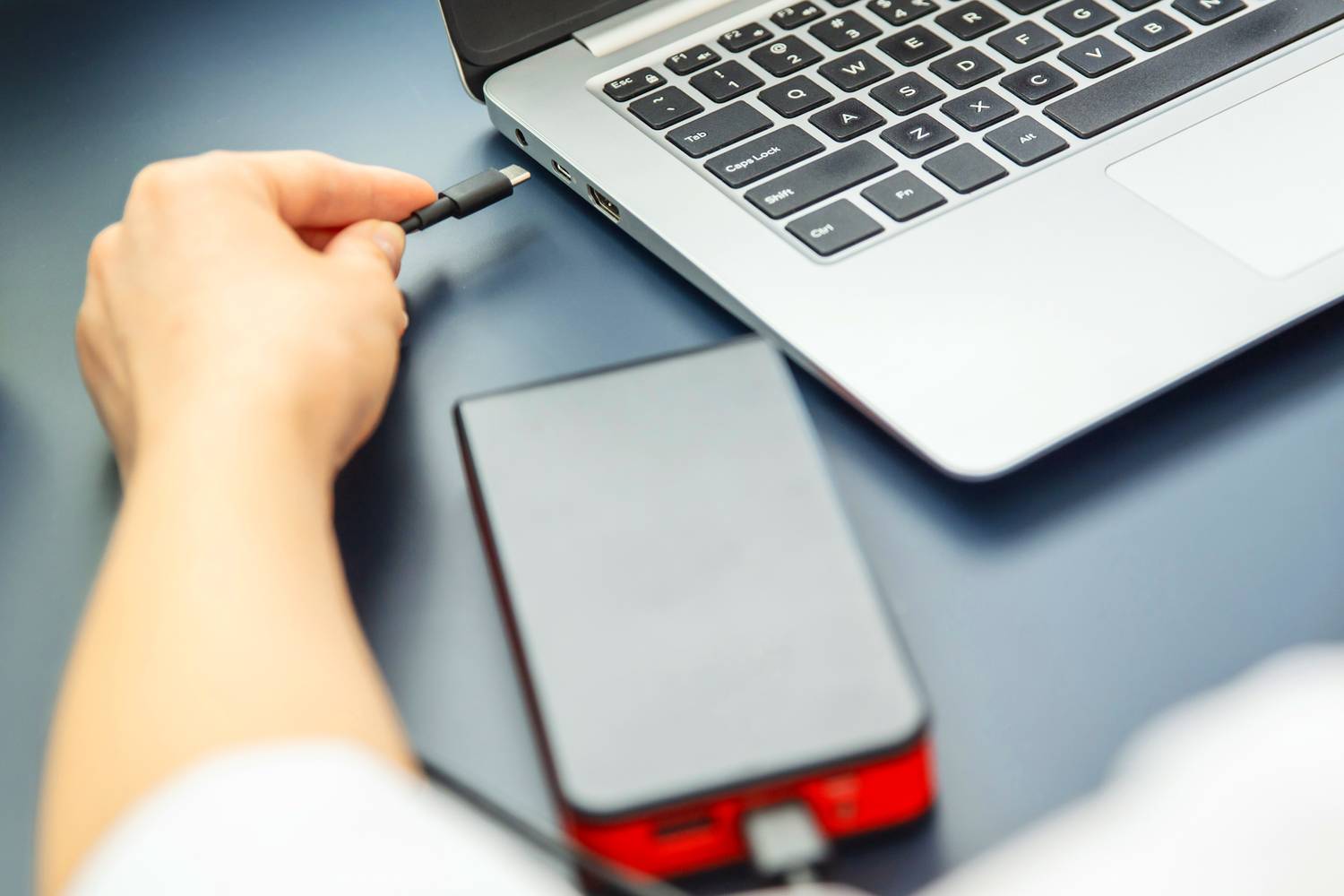
If your Chromebook doesn't seem to be getting any power, you should check to see if it's actually charging. The charger or wall outlet you're plugged into could be the source of the problem.
Your Chromebook has a small LED light (usually next to the port) that will light up when it's charging. If it doesn't light up, try using a different outlet. If that doesn't work, you can test whether your charger is working by switching chargers or using the charger with a different laptop.
If your Chromebook has a power key (on the keyboard) and an actual power button, you should also try pressing that button instead. Sometimes the power key breaks while the button still works.
2. Check Chromebook Battery
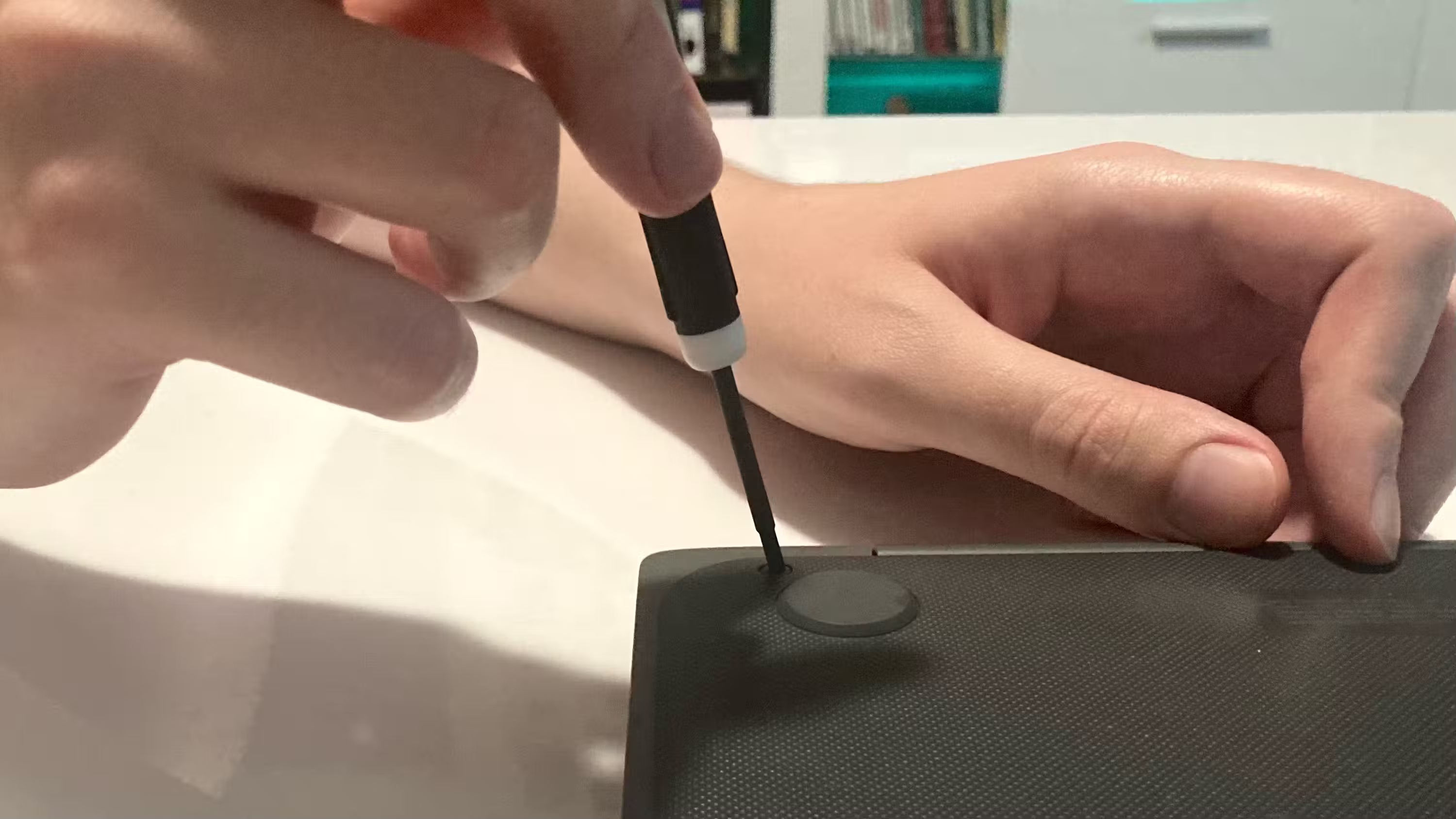
If the charger works but your Chromebook still won't turn on, the Chromebook's battery may be the problem. If your Chromebook only turns on when plugged in, the battery needs to be replaced.
It's also possible that your Chromebook isn't responding to the charger. Some users have reported that using a low-power USB-C charger from their phone seems to "restore" the battery issue, so if you've tried other options, it's worth trying.
If you decide to replace the battery, you should probably leave it to a professional unless you have experience. Opening your Chromebook to remove and replace the battery will void your warranty.
However, some Chromebooks are easier to repair than others. If you decide to do it yourself, sites like iFixit have guides for almost every Chromebook model. Search for your Chromebook model and you'll have all the information you need to replace the battery!
3. Disconnect peripherals from your Chromebook
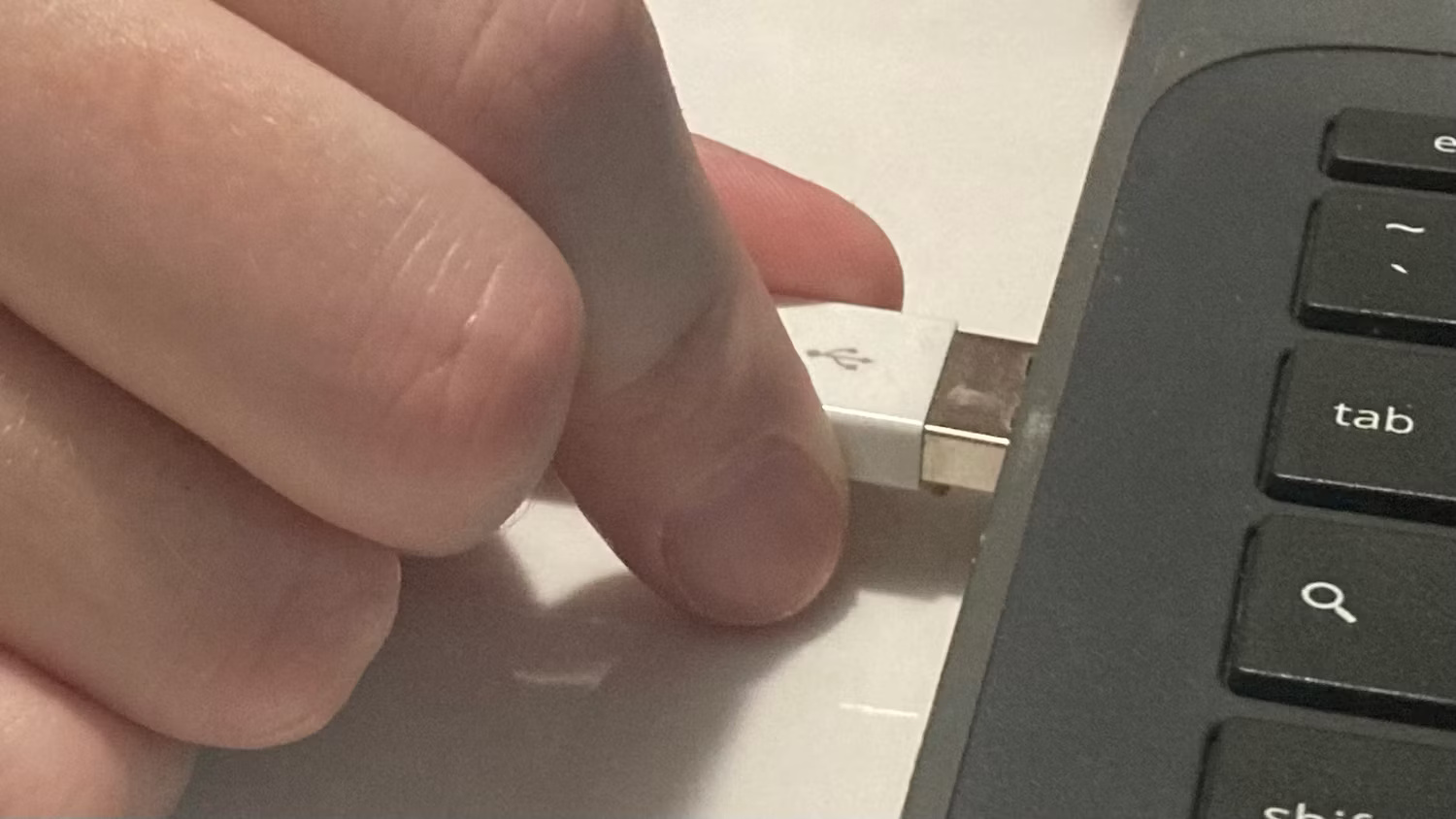
Sometimes, peripherals (external devices, like a mouse or headset) can cause your Chromebook to not turn on. This is usually due to the device consuming too much power, but it could also be faulty.
If your Chromebook won't turn on, try unplugging all of your external devices and turning them back on. If that works, plug them back in one at a time to determine which device is having the problem. Rather than a specific device having issues, Chromebook power issues can also be caused by having too many devices plugged in at once. If you can use individual devices without issue, consider unplugging your least important peripherals.
4. Clean your Chromebook's charging port
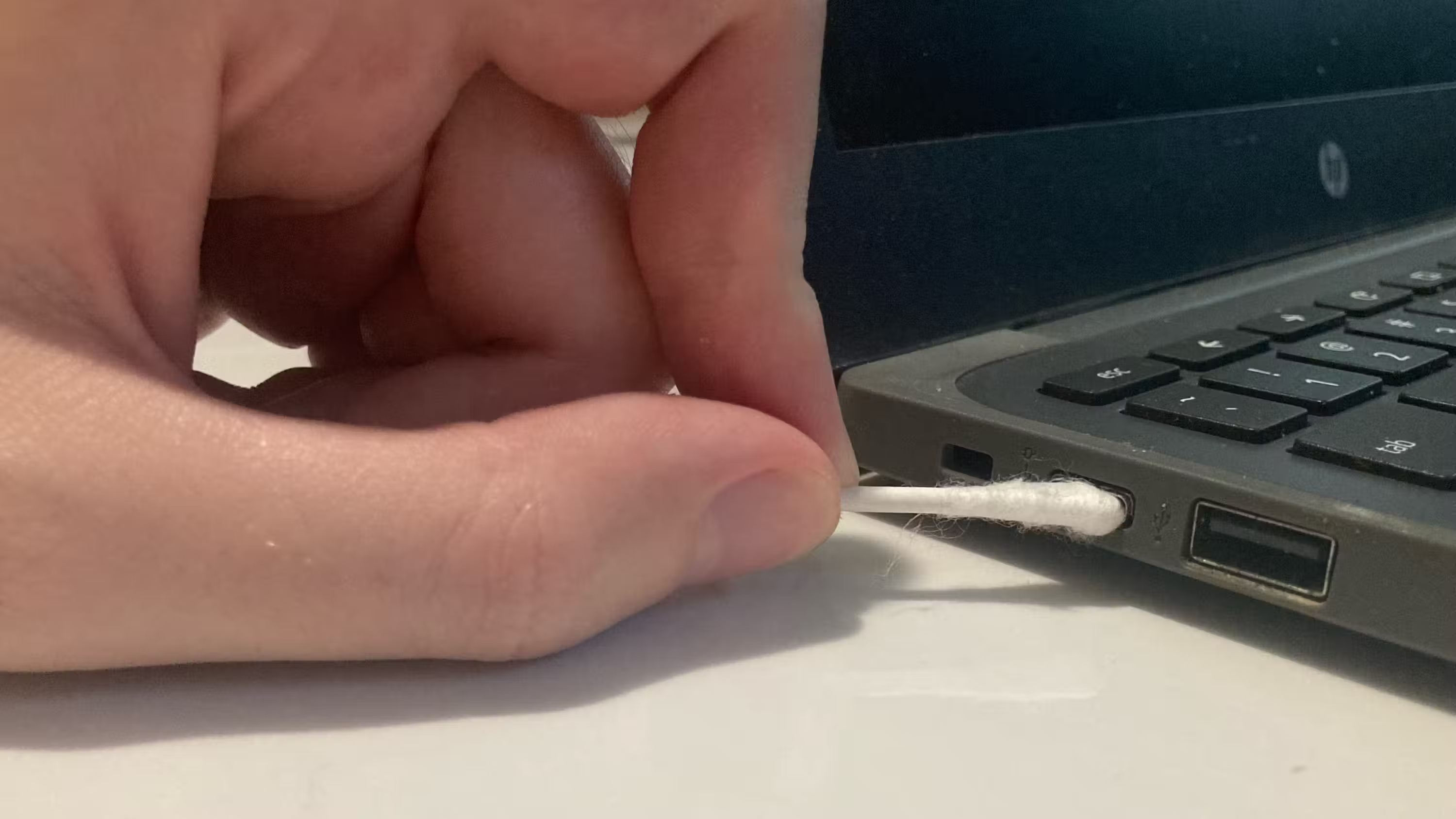
Dirt and debris in your Chromebook's charging port can also cause your Chromebook to not turn on, so you may need to do a deep clean of the port. A can of compressed air can remove most of the debris from the charging port.
If you find any large or sticky debris that the compressed air cannot remove, you can also gently remove it with a plastic toothpick. Do not use a bamboo toothpick as there is a risk of splintering the bamboo and causing a bigger problem.
If there is something particularly sticky inside the port, you can use a flat cotton swab and 70% isopropyl alcohol to remove the dirt. Electronics cleaner is also great for this job if you have it on hand.
5. Troubleshoot Chromebook Screen Issues

If your Chromebook appears to be working but won't turn on, there may be a problem with your display. Chromebooks will turn off their screens completely when set to the lowest possible brightness, so you can test to see if that's the problem by repeatedly pressing the brightness up key.
If that doesn't work, you can also try connecting your Chromebook to an external display. Just connect your Chromebook to the external display using an HDMI cable. If that display works, you may need to take your Chromebook to a professional to have the display repaired.
6. Reinstall or repair ChromeOS
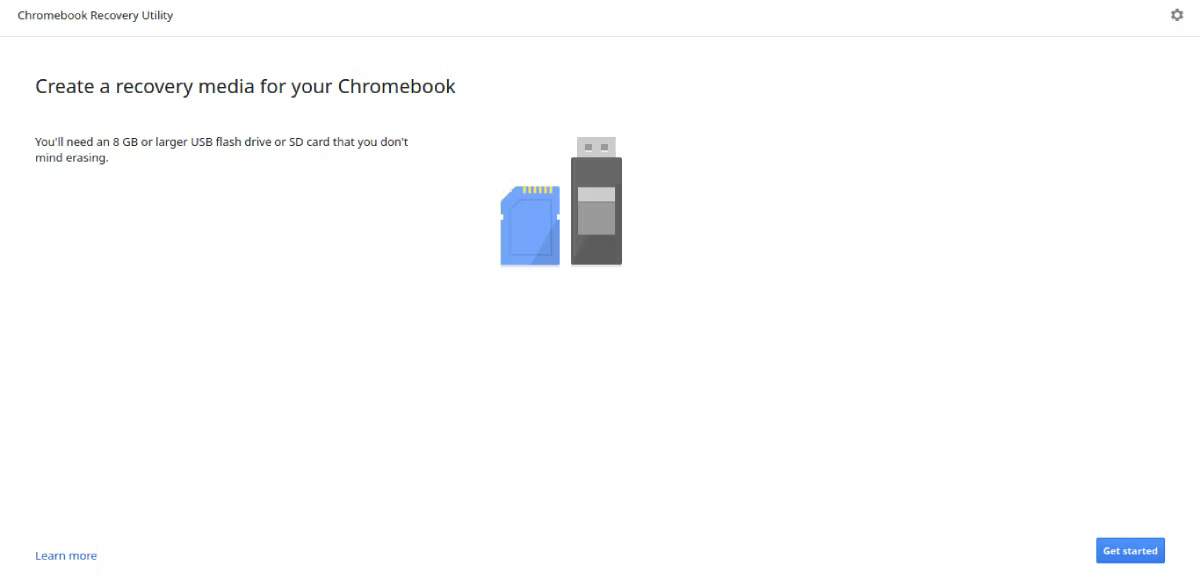
If your Chromebook can power on but won't boot successfully and a hard reset doesn't work, you may need to reinstall ChromeOS completely. To do this, follow these steps:
- Press and hold Esc + Refresh at the same time , then press the Power button .
- Release Esc + Refresh when the screen changes.
- When you see a prompt that says Please insert a recovery USB stick or SD card , select this option if available: Recover using internet connection .
- If that option isn't available, you'll need to create a recovery USB drive.
- Download , then launch the app and follow the prompts to create new recovery media.
- Plug the recovery USB into your Chromebook, then wait for the app to verify the drive's contents.
- If the drive is authenticated, ChromeOS will install automatically. You will need to wait and see if the process is successful.
7. Try Powerwashing Your Chromebook
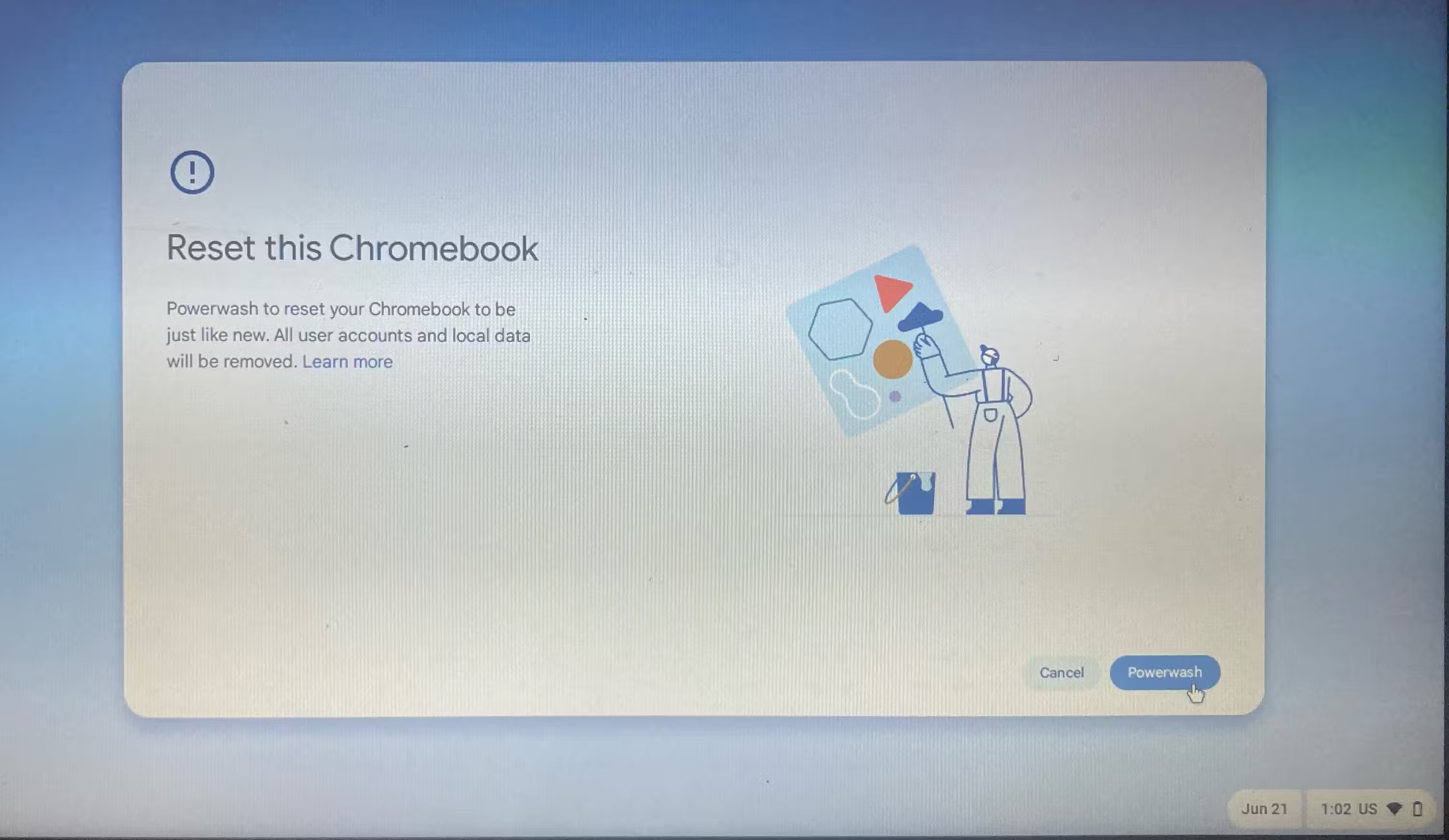
If your Chromebook can "power on" but cannot successfully boot, you should try factory resetting your Chromebook.
If none of these troubleshooting steps work, taking your Chromebook to a professional is the best way to get it working again. Professional repairs can be expensive, but you can rest easy knowing you'll have your device back in good time.
You should read it
- What is a Chromebook and how is it different from a Laptop?
- Samsung updates Chromebook
- How to view your Chromebook's CPU information
- The first Chromebook uses a 15.6-inch screen
- What are Google's new high-end Chromebook Plus specs like? When will it launch?
- How to pin files or folders to the 'taskbar' of your Chromebook
- How to check the configuration of the Chromebook
- How to lock a Chromebook when not in use
May be interested
- How to check the configuration of the Chromebook
 we will show you 2 ways to access and see how your chromebook is configured, how much ram ...
we will show you 2 ways to access and see how your chromebook is configured, how much ram ... - How to lock a Chromebook when not in use
 when using a laptop or desktop in general, most of us often have the habit of putting the machine into sleep mode when temporarily not in use. the same goes for chromebooks, how do you lock your chromebook when it's temporarily not in use.
when using a laptop or desktop in general, most of us often have the habit of putting the machine into sleep mode when temporarily not in use. the same goes for chromebooks, how do you lock your chromebook when it's temporarily not in use. - Googe wrote poetry to market Chromebook computers
 google has just decided to bring its chromebook to 9 new markets to expand its market share. to market this product in 9 countries, google has ... made a poem to give chromebook users.
google has just decided to bring its chromebook to 9 new markets to expand its market share. to market this product in 9 countries, google has ... made a poem to give chromebook users. - How to take a screenshot on chromebook
 whether you want to capture part or all of the screen on your chromebook, the instructions below will show you how to do it in detail. find out right here!
whether you want to capture part or all of the screen on your chromebook, the instructions below will show you how to do it in detail. find out right here! - Samsung launched the Chromebook 2 duo
 samsung has officially launched the chromebook 2 laptop duo with a faux leather design like on the galaxy note 3, with a pretty good configuration and reasonable price.
samsung has officially launched the chromebook 2 laptop duo with a faux leather design like on the galaxy note 3, with a pretty good configuration and reasonable price. - Leaked images and information about Samsung Chromebook 2
 the @evleaks account has just posted an image that is said to be the next generation of chromebooks produced by samsung with the name may be samsung chromebook 2.
the @evleaks account has just posted an image that is said to be the next generation of chromebooks produced by samsung with the name may be samsung chromebook 2. - HP announced Chromebook using Tegra K1 processor
 hp has just officially unveiled the chromebook 14 g3 14-x050nr model with touch screen, powerful nvidia tegra k1 processor and 4gb of ram.
hp has just officially unveiled the chromebook 14 g3 14-x050nr model with touch screen, powerful nvidia tegra k1 processor and 4gb of ram. - Should you buy a Chromebook or tablet?
 tablets are primarily seen as a personal entertainment device, while chromebooks are often seen as an alternative to cheap laptops.
tablets are primarily seen as a personal entertainment device, while chromebooks are often seen as an alternative to cheap laptops. - HP announced a new multi-color Chromebook duo
 hp has just released a new pair of chromebooks with a multi-color design, including chromebook 11 and chromebook 14, which are offered at attractive prices.
hp has just released a new pair of chromebooks with a multi-color design, including chromebook 11 and chromebook 14, which are offered at attractive prices. - 1 million Chromebooks were sold in the second quarter
 chris farinacci, google's global marketing manager, said about 1 million chromebooks were provided to schools in the second quarter of 2014.
chris farinacci, google's global marketing manager, said about 1 million chromebooks were provided to schools in the second quarter of 2014.










 Fix GarageBand not showing audio files quickly
Fix GarageBand not showing audio files quickly Quick Fix for Unable to Merge Hard Drives in Windows 11
Quick Fix for Unable to Merge Hard Drives in Windows 11 7 ways to fix the error of not being able to enter the BIOS menu
7 ways to fix the error of not being able to enter the BIOS menu Windows 11 has added new Timer and Countdown clock widgets, what's noteworthy?
Windows 11 has added new Timer and Countdown clock widgets, what's noteworthy? 6 Reasons to Upgrade to a Smart Display
6 Reasons to Upgrade to a Smart Display How to update drivers on Windows 11
How to update drivers on Windows 11